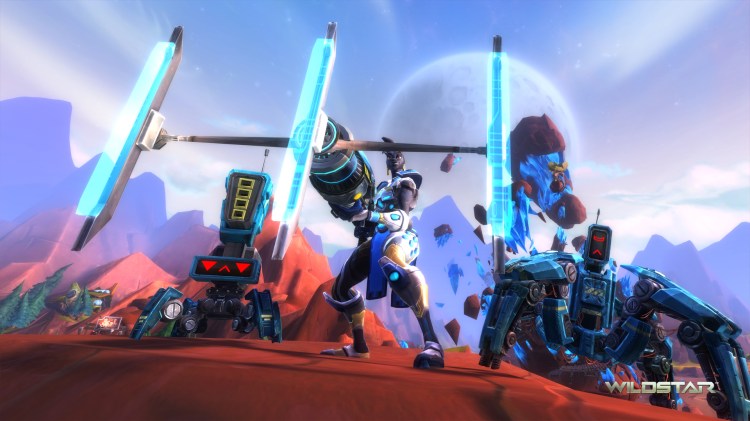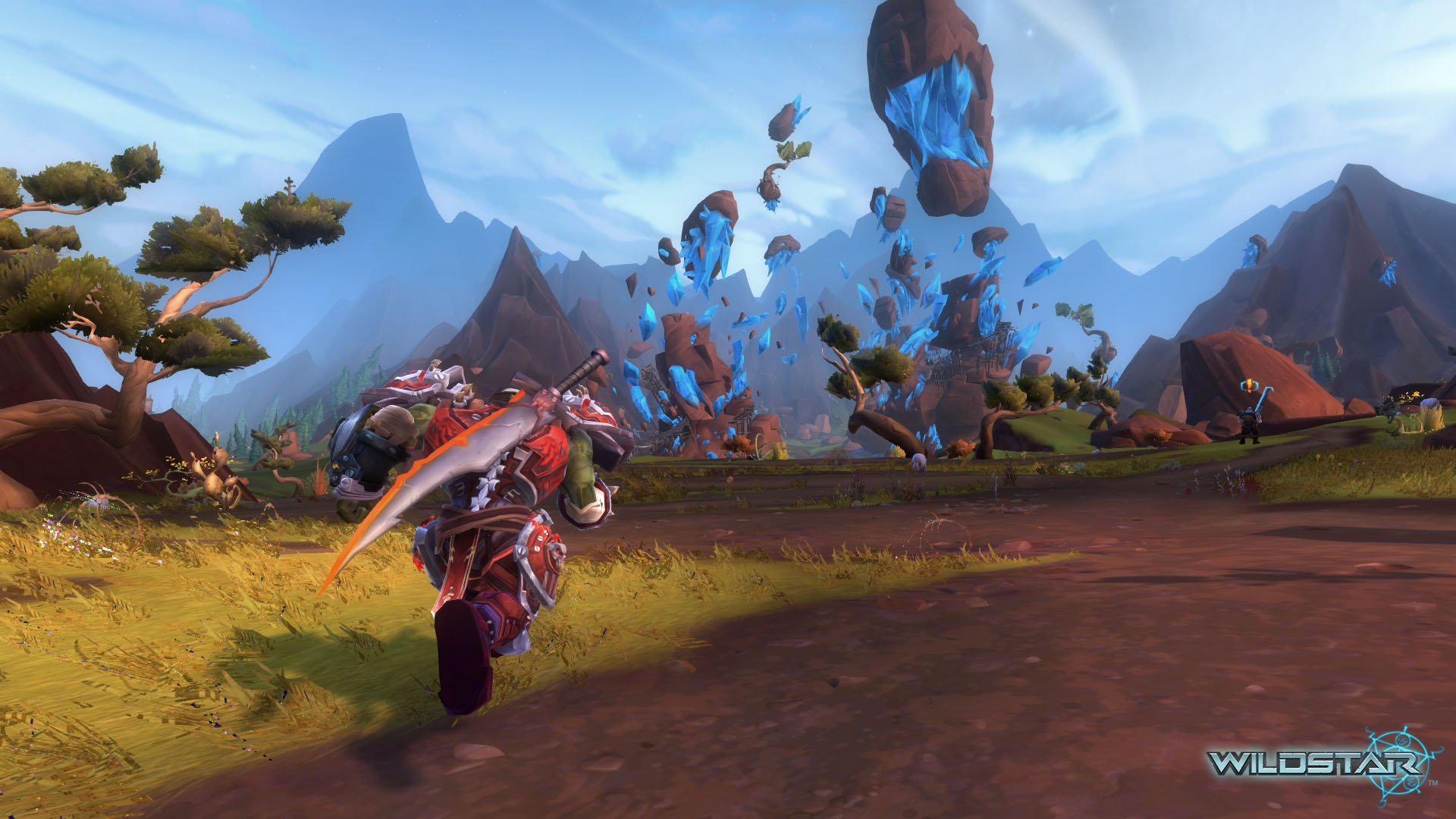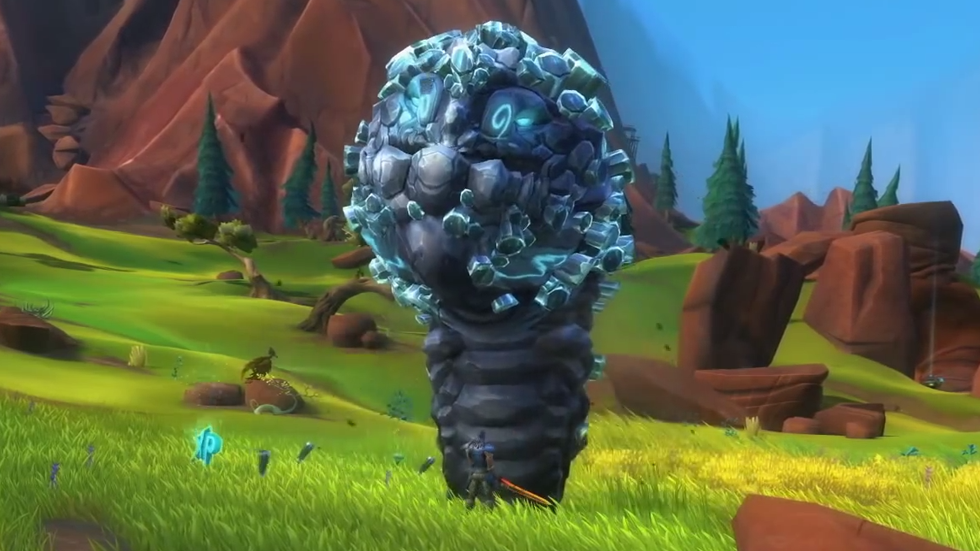Some game developers have way too much fun discussing math.
I recently sat down with Jeffrey Gaffney, executive producer at Carbine Studios, to talk about the upcoming massively-multiplayer online game WildStar. The studio built this cartoonish and light-hearted adventure to stack increasingly outlandish actions into as many outcomes as possible. The results can be utterly ridiculous.
A game built to stack content
This was my first preview where the terms “non-Euclidian geometries” and “compound interest” got tossed around regularly. To translate for my fellow laymen, pretty much everything in WildStar is bigger on the inside than the outside (think of Dr. Who’s Tardis). But the phrase that speaks most to Carbine’s long-term design philosophy is “n2 content”.
“The goal in everything is to, whenever possible, have things multiply,” said Gaffney.
The designers at Carbine increase the number of event outcomes (silly or not) for even the simplest of tasks by stacking various in-game statistics. Stepping on a mine in a low-gravity environment could send your character humorously far already. But when you have already magnified your jump ability four times over by scanning glowing minerals and equipping an item that grants another jump boost, you’ll be flying into the clouds.
“At one point I was a scientist…collecting information for a mission I was on,” Gaffney said. “Stepped on a mine and blew myself into lower earth orbit; [I went] literally into the cloud layer and literally plummeted to my death at the top of a cliff. That’s the joy of that n2 interaction.”
Every action has the potential to get ridiculous
In your average MMO, a mining node is a random blip appearing in a forest you are exploring. You click on it to make a progress bar appear and spend half a minute watching your character swing a pick axe before getting a certain amount of ore. The same concept applies in WildStar, but here, every mining node has a slight chance of releasing a giant ore-spewing worm.
“[A worm] leaps up out of the ground as a ginormous, 30-foot tall thing,” said Gaffney. “[and it] starts spawning these little mining monsters to fight you. If you kill it, you can climb into its stomach — which is its own little dungeon — and harvest as much as you can before the dungeon collapses.”
These slight probabilities of craziness extend to nearly every aspect of WildStar. Designing your own futuristic skate-park home base could one day grant stat bonuses if you light it well enough or invite friends over. The same raid one week could be impossible for healer-centric parties but easier for newer players. The goal at Carbine seems to have been to create an ever-shifting mass of barely contained insanity, and it was hard to consider much of what I saw in the game’s beta normal.
When you design everything in your game to stack probabilities and statistics, anything not already hiding a giant worm or stratospheric leap can be retroactively made insane with future patches. Carbine Studios already has much of the first years’ worth of post-launch content at varying stages of planning, so don’t count on things remaining static for too long.
“One thing we’ll really double-down on post-launch is lots and lots more discoveries,” Gaffney said. “With a lot of those random elements, you don’t really care your first time through the game. But they are direly important to you on your second or third or fourth.”
Nothing here is normal
Math can be fun when it sends you into the collapsing innards of a gigantic ore worm. Carbine Studios’ WildStar is an MMO that takes nothing seriously, especially its own design. Given gamers’ tendency to take every open-world game to the silliest extremes, this may be the one adventure that’s already waiting for them there.
WildStar will release on June 3 for PC.
VentureBeat's mission is to be a digital town square for technical decision-makers to gain knowledge about transformative enterprise technology and transact. Learn More




